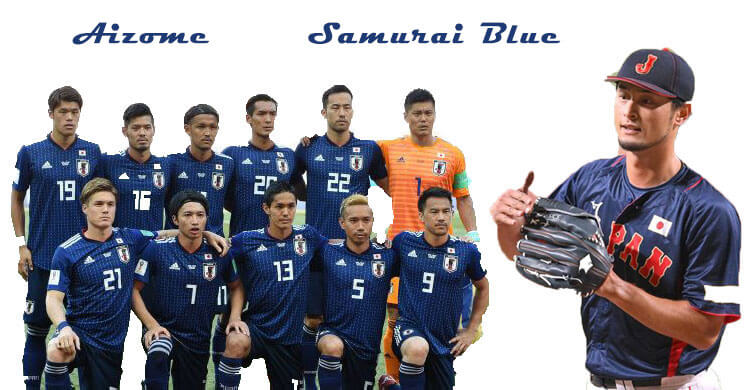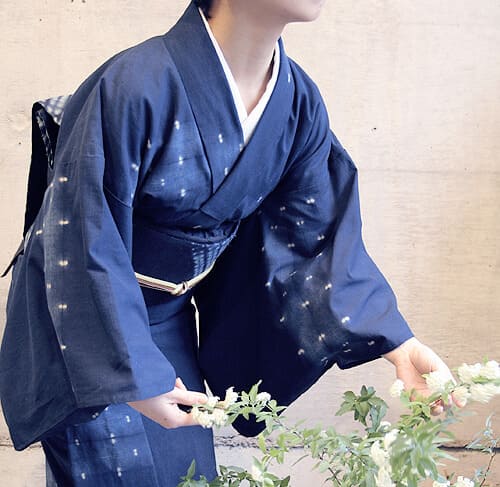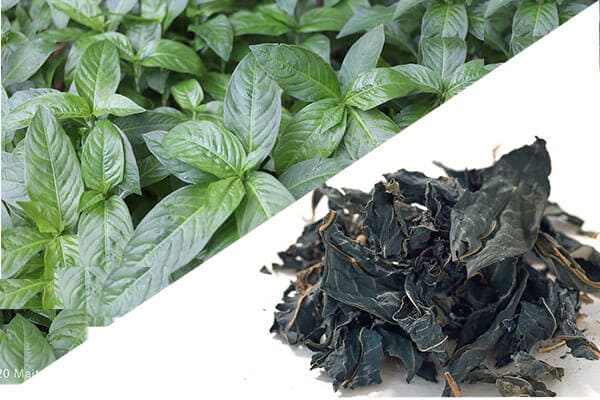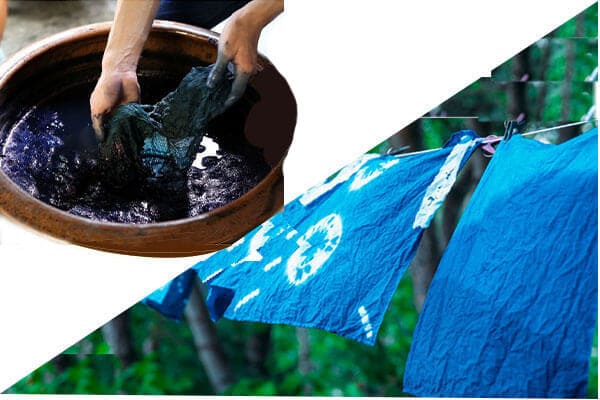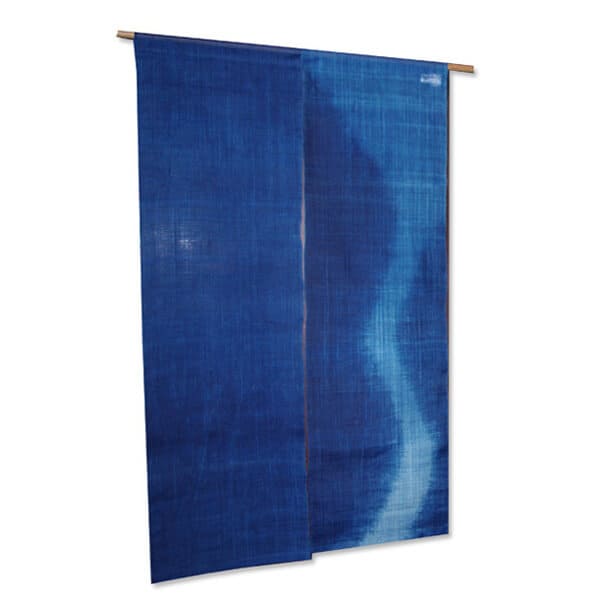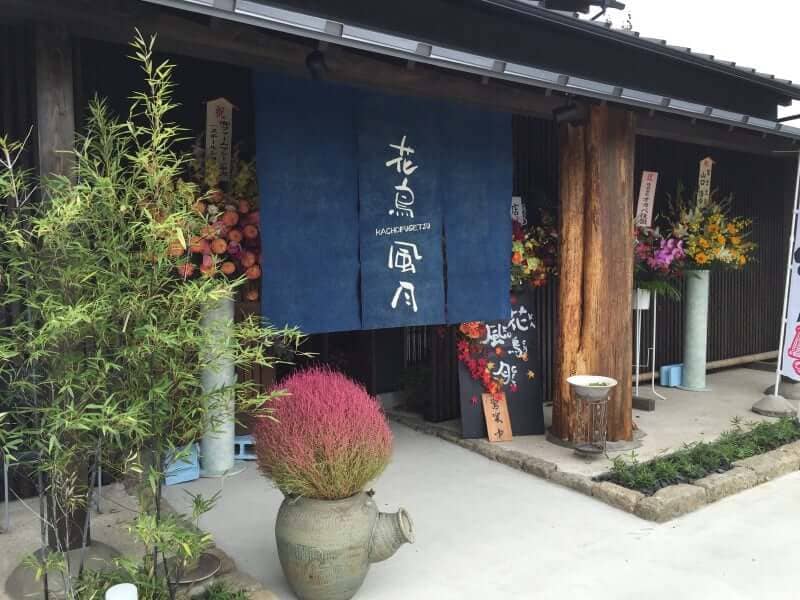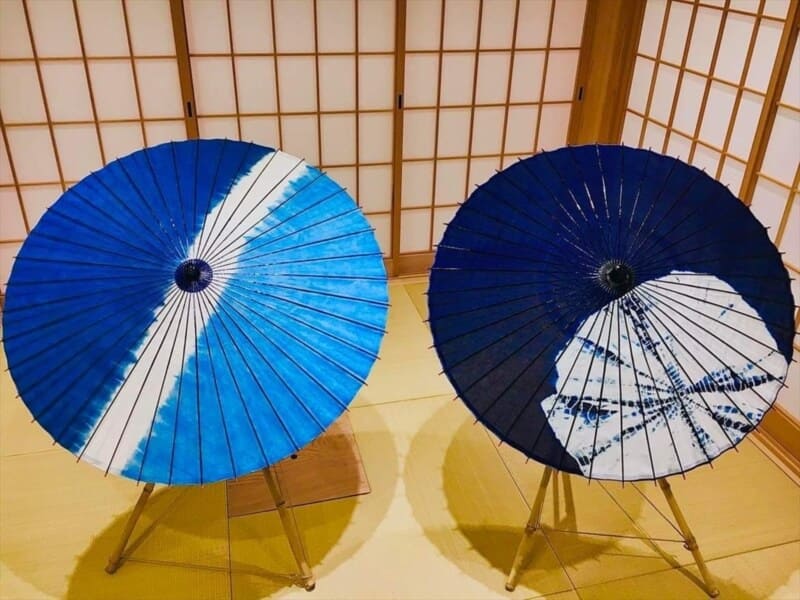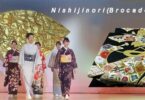Hi how are you? Today’s theme is “Indigo dyeing” (Aizome) that is referred to as “Cool Japan” color.
Japanese players in Baseball & Football in Blue uniform are called
“Samurai Blue” which comes from ” Aizome ” (Indigo dyeing).
We are glad to see recently their outstanding activities performed globally
by both players wearing blue uniforms made of Aizome.
What’s Aizome (indigo dyeing) ?
Fashionably elegant, and sophisticated, the patterns of blue and white on this kimono are an example of aizome, traditional Japanese indigo dyeing. This has long been a favourite colour in Japan, and it used to be called “Japan Blue“
Although these fabrics use only two colours, they come in a great range of hues. The dye used in aizome is produced from the indigo plant, known in Japanese as ai plant shown below. The leaves were a source of indigo dye.
It is perfect for colouring either bolts of fabric or skein of threads. Indigo became popular because it could be used for dyeing any kind of material, whether cotton, hemp or silk.
Aizome dyers use two main techniques to create patterns, the paste-resist method and tie-dyeing.
Here’s an example of fabric that was dyed by the paste-resists method. It’s a furoshiki wrapping cloth that was given as a wedding present in the Edo period. It depicts flying cranes.
And here’s an example of one of the many tie-dyeing techniques, called Yamamichi-shibori. The fabric is folded many times and tied before being place in the dye bath. The resulting pattern forms undulating lines, a design thought to resemble paths snaking through the mountains.
Since ancient times, aizome has been one of the most popular kinds of dyed fabric for clothing in Japan.
From the 12th century, aizsome fabric caught on among the ruling samurai class. Paintings from that period depict warriors wearing indigo-coloured clothing under their armour.
During the Edo period, from the 17th to the mid-19th centuries, indigo dyeing spread to the common people.
During the period, the shogunate wished to prevent the townspeople from becoming too powerful, so it repeatedly issued edicts and sumptuary laws that banned excessive displays of finery. Commoners were only allowed to wear clothes in subdued colours, such as blue, brown or grey.
In the face of these restrictions, the townspeople turned to indigo-dyed fabrics to indulger their sence of enjoyment of wearing distinctive clothes.
This cloth features, a huge dragonfly motif, which is dyed only in blue and whilte, however, the intricacy of the design manages to convey a sense of chic luxury.
During the course of its long history, the skills of indigo dyeing have spawned a wide variety of designs. One factor that fuelled this was peoples’s desire for fashionable clothing, even at a time when luxury was banned.
Finally, Aizome (indigo dyeing colour) is nice colour, we can enjoy stylish varieties of clothing in Aizome for casual ways, sports and the like, why don’t you try ?

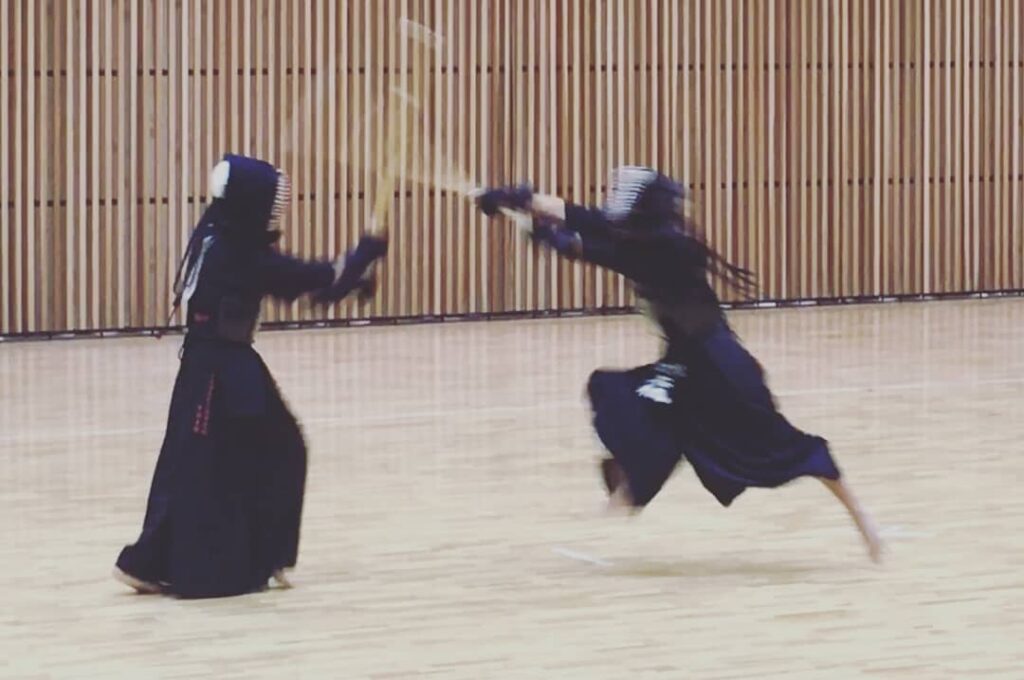

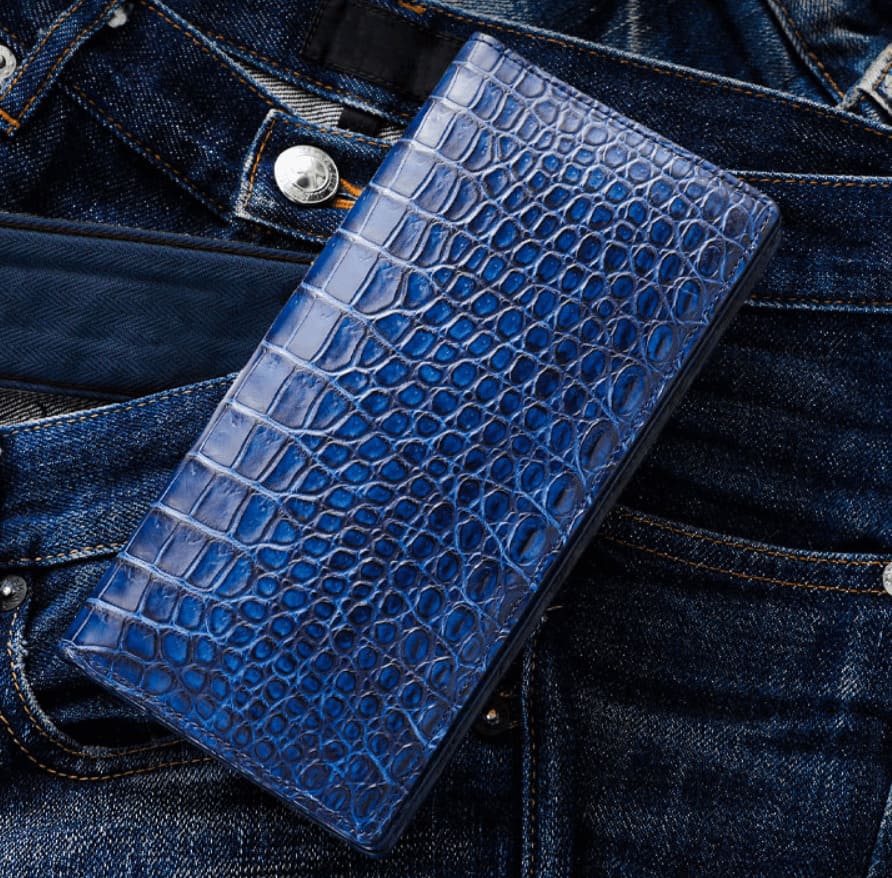 All Denim Crocodile Billcase Wallet
All Denim Crocodile Billcase Wallet
This has long been a favourite colour in Japan.

